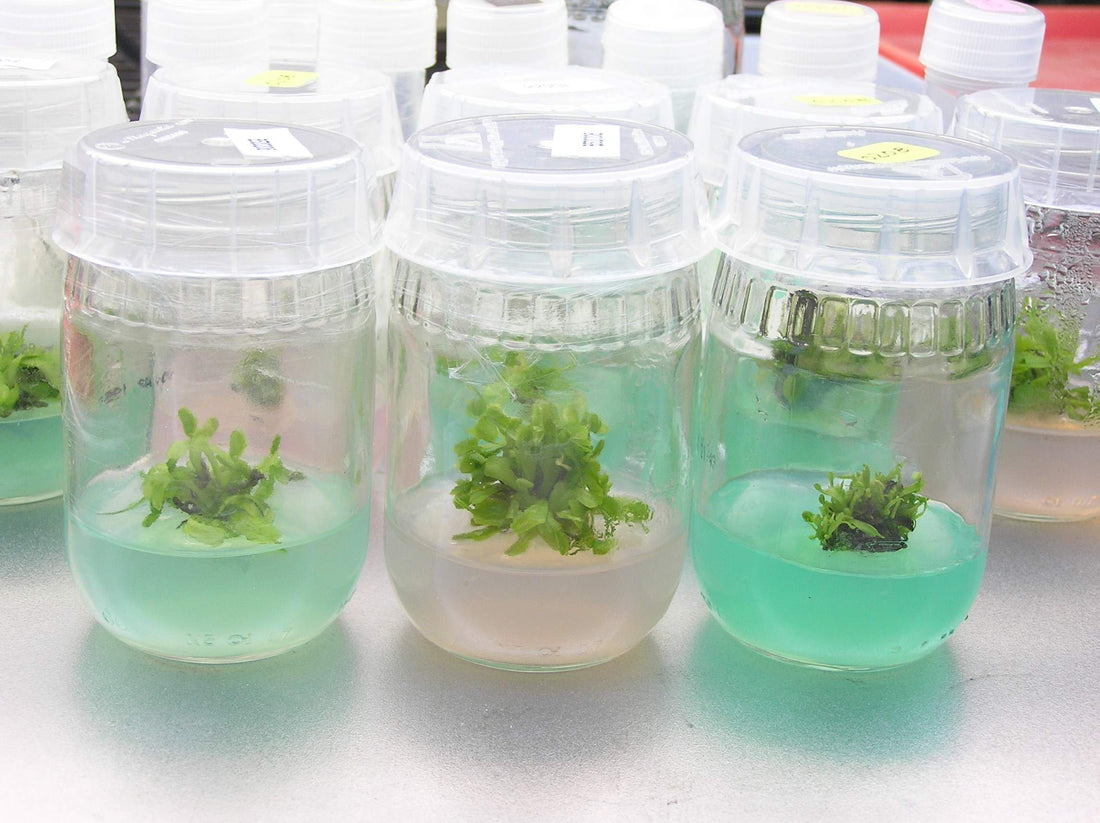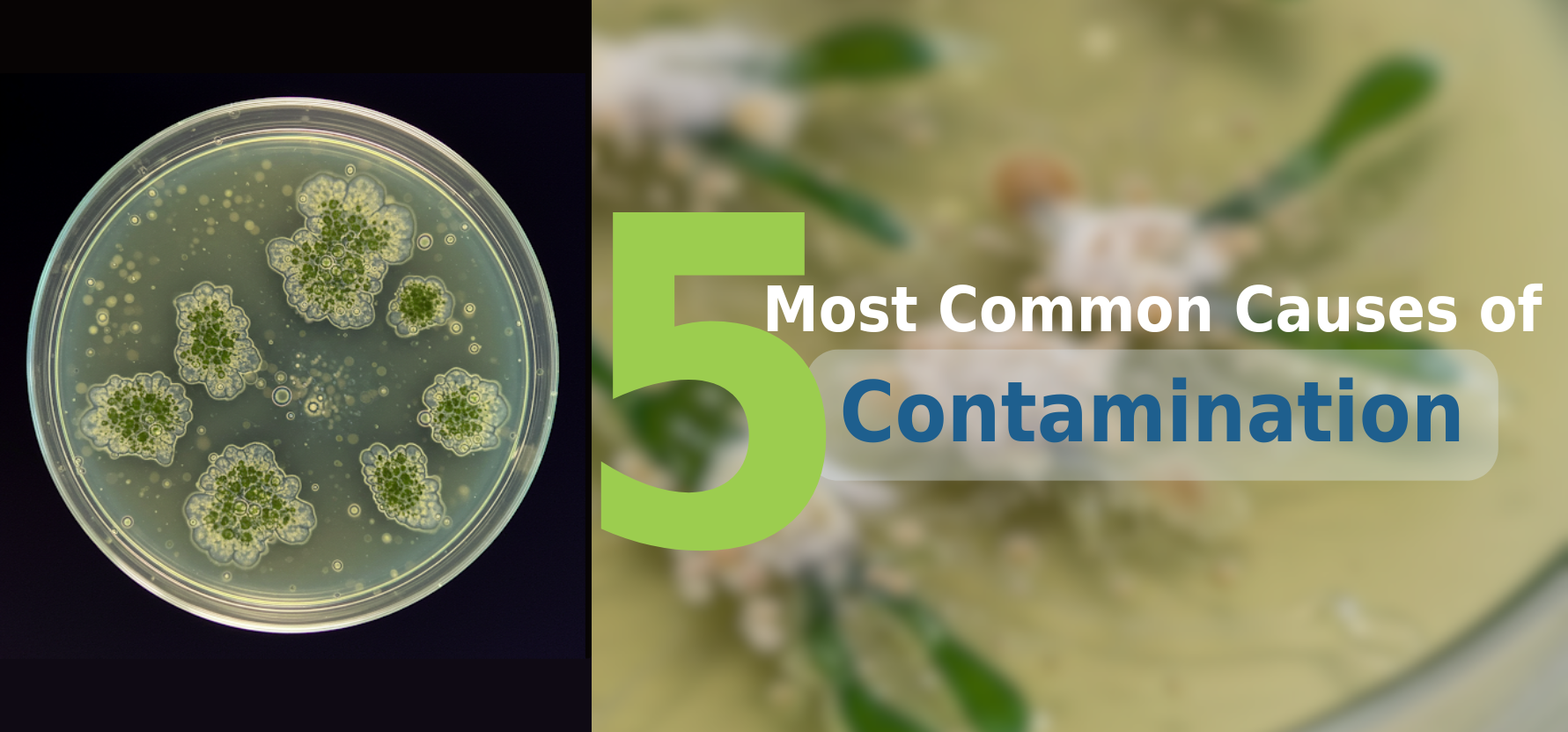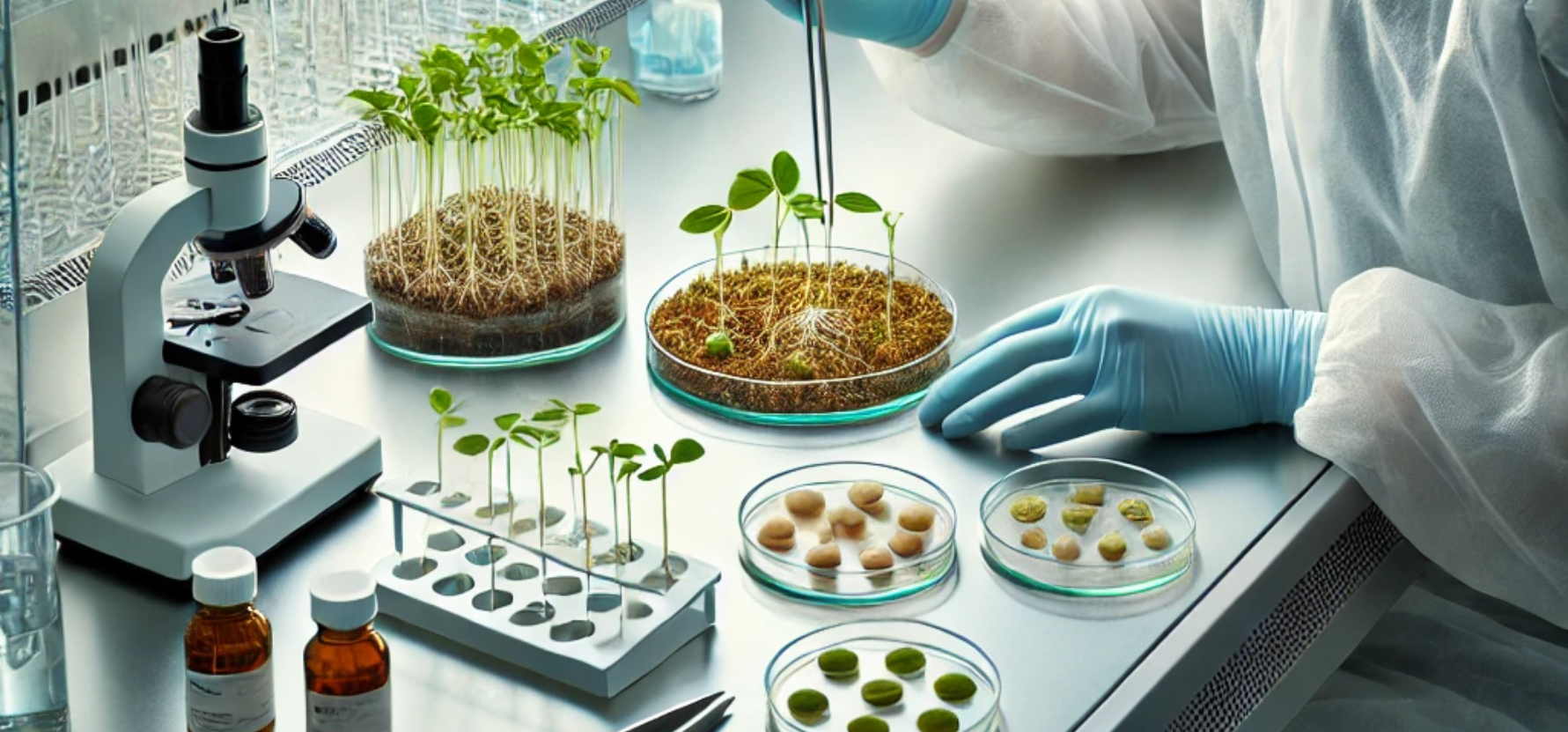
Major Components of Tissue Culture Media
As a content and community manager, I leverage my expertise in plant biotechnology, passion for tissue culture, and writing skills to create compelling articles, simplifying intricate scientific concepts, and address your inquiries. As a dedicated science communicator, I strive to spark curiosity and foster a love for science in my audience.


Isn’t it fascinating how you are able to grow a whole plant from just a few cells!
Tissue culture technique is an amazing way to clone the plants, conserve the gene pool, and save the endangered species. It’s a precious technique for the researchers.
However, can you imagine culture cells in the lab without media? No. Right! Culture media provides the essential nutrients required for the growth and development of plants in labs.
This article will present to you a whole story of the essential components of the culture media and their role in it.
Major Components of a Culture Media
Macronutrients
It includes elements, like Nitrogen, Phosphorous, Calcium, Magnesium, Potassium, Sulfur, and Carbon (separately added). These elements are required for the growth and development of the plant.
The table below shows the concentration range of the elements, needs to be added in the media:
| Elements | Concentration Range |
|---|---|
| Nitrogen | 25-60 mM |
| Potassium | 20-30 mM |
| Phosphorous, Calcium, Magnesium | 1-3 mM |
Micronutrients
Micronutrients are required in a trace amount, however, they play an essential and massive role in cell and tissue growth. It includes elements like iron, manganese, zinc, boron, copper, and molybdenum.
Iron is critical of all the other elements and it is used in media by chelating it with EDTA. In certain media, elements like cobalt, iodine, sodium, or chloride are also used, even if their importance in cell growth is not well understood.
| Elements | Concentration Range |
|---|---|
| Cobalt, Iodine | 0.1 µM |
| Iron, Molybdenum | 1.0 µM |
| Iodine | 5 µM |
| Zinc | 5-30 µM |
| Boron | 25-100 µM |
| Manganese | 20-90 µM |
Organic Supplements
Vitamins
Vitamins are synthesized by plants in an inadequate quantity. For this reason, media cultures are supplemented with vitamins. They are required for the growth and differentiation of the plants.
It includes: thiamine, riboflavin, niacin, pyridoxine, folic acid, pantothenic acid, biotin, ascorbic acid, myoinositol, Para amino benzoic acid, and vitamin E. Vitamins, mostly used in the culture media are thiamin (B1), nicotinic acid and pyridoxine (B6).
| Vitamins | Concentration Range |
|---|---|
| Thiamine | 0.1-10 mg.l-1 |
| Nicotinic Acid | 0.5-5 mg.l-1 |
| Pyridoxine | 0.1-10 mg.l-1 |
Myoinositol
It is used in culture media to stimulate the growth of plants, specifically the process of cell division. It breaks down into ascorbic acid and pectin and is incorporated into phosphoinositides and phosphatidyl-inositol.
It is used in the culture media between the concentration range of 50-5000 mg.l-1.
Amino Acids
It is the source of nitrogen for the cells, as it can be easily assimilated by the plants compared to the inorganic nitrogen. Amino acids play a role in the enhancement of cell growth in culture including establishing the culture cells and protoplasts.
The frequently used amino acids added to the media are casein hydrolysate, L-glutamine, L-asparagine, and adenine. Some other amino acids that are used to enhance cell growth are glycine, glutamine, L-arginine, asparagine, tyrosine, and cysteine.
| Amino Acid | Concentration Range |
|---|---|
| Casein hydrolysate | 0.25-1 g.l-1 |
| Glycine | 2.0 mg.l-1 |
| Glutamine | 8 mM |
| Asparagine, Tyrosine | 100 mg.l-1 |
| Arginine, Cysteine | 10 mg.l-1 |
Organic Extracts
It includes substances extracted from natural sources such as protein hydrolysates, coconut milk, yeast extract, malt extract, ground banana, orange juice, and tomato juice. They play a role in the growth enhancement of the plant.
The drawback of these organic extracts is, they vary in the quantity and quality of the growth-promoting factors.
Sometimes activated charcoal is also added to the media depending on the plant cells to be cultured. It stimulates the growth of cells when added to the culture media of plants like carrot, tomato, orchid, and onion. Whereas, adding this to the tobacco and soybean culture media results in its growth inhibition.
Solidifying agents
They solidify the culture surface which supports the culture establishment and growth. It’s two types include agar and gelatin.
Agar
It’s a polysaccharide and a universal gelling agent that is isolated from the seaweed. It forms a solid or semi-solid surface for the cell culture. It is a widely used solidifying agent mainly because of two reasons, it does not react with other media constituents and it is not digested by plant enzymes.
The concentration of agar, used in cell culture media ranges from 0.8-1.0%.
Gelatin
It is composed of peptide and protein, produced from the hydrolysis of collagen. Its application is limited, compared to Agar, because it melts at 25℃ and loses its gelling property.
Plant growth regulators
Auxins
It is of two types: natural which includes indole acetic acid (IAA) and synthetic which includes indole-3- butyric acid (IBA), 2,4-dichlorophenoxy-acetic acid (2,4-D) and naphthalene- acetic acid (NAA).
It is required for the cell division and cell elongation processes. Depending on its concentration, it can lead to the formation of callus (at high concentration) or root (at low concentration). The most common, effective, and widely used acetic acid in the culture media is 2, 4-D acetic acid
Cytokinin
The various cytokinins used in culture media are BAP (6-benzyloaminopurine), 2iP (6-dimethylaminopurine), Kinetin (N-2-furanylmethyl-1H-purine-6-amine), Zeatin (6-4-hydroxy-3-methyl-trans-2-butenylaminopurine), and TDZ (thiazuron-N-phenyl-N-1,2,3 thiadiazol-5ylurea).
It stimulates cell division which results in shoot formation and axillary shoot formation. It is also involved in the retardation of root formation. The most commonly and widely used cytokinins in the culture media are kinetin and benzyl-amino purine.
|
Do You Know?
It is crucial to determine the “ratio of auxin to cytokinin” before they are added to the media. Why? Because a higher ratio of auxin to cytokinin promotes the processes like embryogenesis, callus initiation, and root initiation Whereas, a lower ratio of auxin to cytokinin promotes axillary and shoot proliferation. So, it’s important to know what you want from the culture. Note: The determination of the ratio is also dependent on the type of explant and the plant species to be cultured in the lab. |
Gibberellin
It is a member of tetracyclic diterpenoid carboxylic acids. Currently, about 20 GAs have been identified as plant growth regulators, out of which, gibberellin A3 is commonly used in culture media.
Their function involves the promotion of callus growth and elongation of dwarf plants. They are also involved in the inhibition of root and shoot formation.
Abscisic Acid
It can either stimulate or inhibit the callus growth depending on the species of the cultured plant. It also stimulates shoot proliferation and inhibits the later stage of embryogenesis.
Antibiotics
Sometimes, it is required to add antibiotics to the culture media to save your culture from the attack of microorganisms. Mostly, the low concentration of kanamycin and streptomycin is used in the culture media. However, the use of antibiotics should be avoided as it also inhibits cell growth.
The best alternative to antibiotics is PPM (Plant Preservative Mixture). This protects your culture from any kind of microorganisms whether it’s airborne, waterborne, endogenous, or arise from human contact. Moreover, the best properties of PPM include:
- It doesn’t have an inhibitory effect on callus growth
- It is heat stable and can be autoclaved with tissue culture media.
References
- Abobkar I.M. Saad and Ahmed M. Elshahed (October 17th, 2012). Plant Tissue Culture Media, Recent Advances in Plant in vitro Culture, Annarita Leva and Laura M. R. Rinaldi, IntechOpen, DOI: 10.5772/50569
- https://www.biologydiscussion.com/plants/plant-tis...
- http://www.tulipgroup.com/manuals/4x%20PLANT%20TIS...
Blog Categories
View by Level
Popular Blogs

The 5 Most Common Causes of Contamination in Tissue Culture Labs
Introduction Scaling up your tissue culture production is impossible if you’re constantly battling contamination. Contamination is one of the biggest...
Read More
What No One Tells You About Subculturing (Until It’s Too Late)
Introduction Subculturing is a crucial process in tissue culture. Why? Because it's responsible for multiplying a single small piece of...
Read MoreSubscribe to Our Newsletter








Join the conversation
Your email address will not be published. Required fields are marked